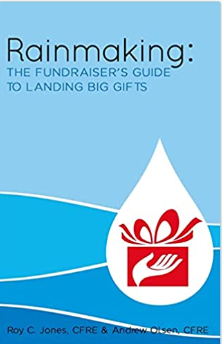I work with development directors and major gift officers every week. The number one challenge they face is scheduling and meeting with major donors in a one-to-one setting. The technology of communication is changing and those that understand that succeed and those that do not… fail.
The day of single channel communication is over. If you are just using the telephone to schedule meetings STOP IT! Rest assured, I am not saying to stop using the phone, but what I am saying start using the phone AND OTHER COMMUNICATION TOOLS AND TECHNIQUES.
Caller i.d., answering machines and the elimination of land lines in people’s homes are requiring successful development professional to systematically use multiple channels. Of course, it is not easy to capture the information in these additional channels. Here are just some of the additional channels which must be added to the home telephone number technique in order to succeed:
- Voice mail: Use it… do not fall into the prideful trap of not talking to a machine. Use the voice mail as a 10 word max commercial. Give your number at the beginning of state your “commercial” and leave your number again. Do not leave more than two messages a week. Do not leave more than one message a day.
- Cell phone number: Give your cell phone number out to everyone, when they call you on your cell phone save the number on your phone and then transfer it to the donor database. The next time you talk to the donor, give them permission to call YOU on your cell phone and then pause… nine times out of ten they was grant you permission to call them on their too. (#1 requirement… critical)
- Hand written note: Next to the phone call this is the most effective way to get a call back. Be brief, thank them for all they do and ask them for just 10 minutes.
- Fed Ex, UPS or USPS overnight: After sending them a hand written note or two you should be willing to send a “dimensional” box or card board overnight mail. It can be a hand written note. Apologize for the urgency, but explain you have been trying to reach them.
- Email address: No brainer… even your grandma has an email address today. Start using email in conjunction with your phone calls. It is simple, quick and an acceptable to most individuals.
- Work number: Most people shy away from using the work number because the incorrectly consider the “gatekeeper” the enemy. The support staff person taking calls for your major donor prospect may be the best way for you to reach your donor. Build a real relationship with this person. Send them a hand written thank you as well. Brief them entirely about why you are trying to reach your supporter. Do not hide or be secretive with the “gatekeeper”. Be transparent and you will get your meeting.
- Linked In address; Facebook address; Twitter address: Go high tech so that you can go old school… here is what you should do. Find your donor on line, “friend them” and then check out their cell and email. Most folks list this “old school” contact information on their social media networks. Use it!
Tips:
Making calls isn’t physically difficult, but it’s emotionally hard. What if people reject you? Well, first, since you’re calling your donors, most will be kind. However, at least half will turn down your request for an appointment. Be nice; release them, because it’s more important to preserve your relationship with people than it is to get that appointment.
Set goals that are real. If you need 20 visits a month (1 meeting per business day) you are going to need to talk to 50. If you want to talk to 50 people you are going to need to leave 100 voicemails. If you want to talk to 50 people you are going to need to dial the phone over 250 times a month. Do not be timid. Start punching the numbers on your phone.
In planning, figure out that you can dial the phone about 25 times an hour, and talk to about five people an hour. When you get good, you might increase that to ten people an hour, but that would be ambitious. This means that each month you are going to need to spend 10 hours just dialing the phone and about 5 hours actually talking to real people. Make the time commitment and pound it out!
Here is a sample script that I have tested from Katherine Wertheim:
Script for phone calls
Hello, this is (My name) of (Organization). Is (Donor’s name) there, please?
(Prefix Last Name)? This is (My name) of (Organization). I’m the (title) (or volunteer).
(For example) Hello. This is Roy Jones with Your Charity. Is Mr. Donor there, please?
Hello Mr. Donor. I’m Roy Jones. I’m the Director of Major Gifts with Your Charity in Your City. Do you have just a minute to talk?
(If not) Shall I call back later or would you prefer a call tomorrow?
(If yes) I’m calling on behalf of our executive director (Name). You’re one of the top donors to our organization, and he would like to meet with you this month. We want to talk to you about the direction we’re going in, and hear about your ideas about our work. I’d like to set up a meeting with you. Would you prefer a weekday meeting or something at night?
(Listen, answer objections)
(Objection, daytime doesn’t work) Would a breakfast or evening meeting work for you? (Always offer a choice of two options, not a choice of a yes or no.)
(If they’re “too busy”) I certainly understand. We promise that this meeting will take less than one hour, probably about 45 minutes. Could you spare 45 minutes next week on Tuesday, or would Thursday work better?
If they agree, confirm their address and ask for directions. Give them your name and number if they have concerns, and that forces them to write down the information, and the time they agreed to as well. You’ll want to call and confirm the day before, and tell them the names of who will be coming.
Be positive, be upbeat, but understand you’ll be turned down for meetings about 50% of the time.
For the first call: leave a phone number. Then, if you don’t hear back (and you probably won’t), call at least three more times but don’t leave a message. If you still don’t get them, then on the fifth call you can leave a message again, and make it clear that you won’t bother them, but leave your number and ask that they call. A few will, most won’t.
Now, go pick up the phone and go to work!



Thank you thank you thank you for this! I’m a volunteer fundraiser and this informaton is a big help for me to prep my volunteer major donor askers.
Thanks Margaret. Please feel free to call or email me if I can help! Best of luck to you. Roy